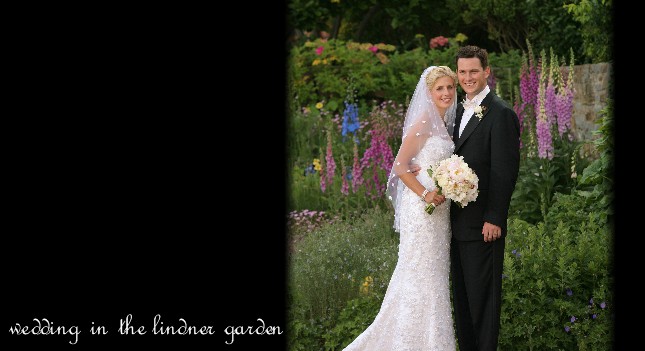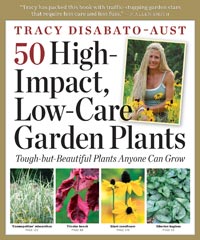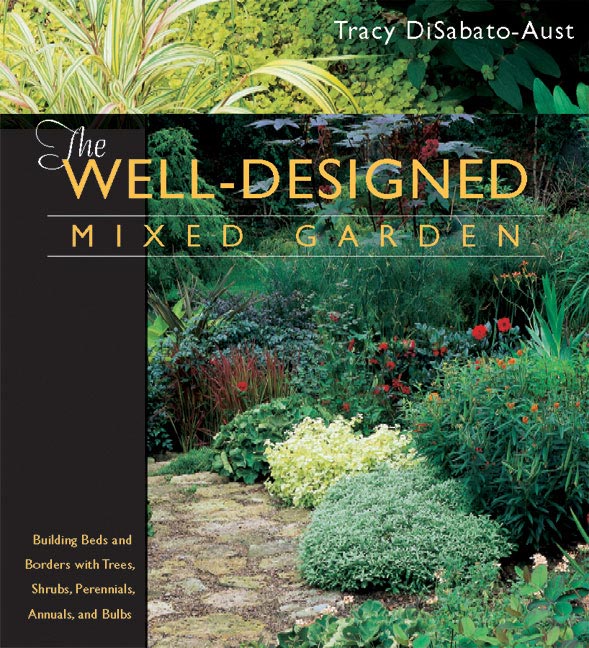New plants, old style, timeless design

Photo by David A. Ziser (c) 2009
My first impression when I saw the Lindner garden, on my initial consultation, was simply that the garden had no soul. It appeared lifeless, stagnant, and without joy. It was designed in a formal, masculine, style with huge clouds of boxwood weighing down the whole scene and a few token perennials and roses planted haphazardly for what I’m sure was meant to be “seasonal color”. Todd MacFarland the estate manager who had brought me into the project assured me there was interest in a change from this style.
When I later met the vivacious, active, and grounded Martha Lindner, I knew there must have been a “misread” between the current garden style and the client. Here was a woman, full of life, who loved flowers, color, fragrance and had memories and emotional attachments to plants from her childhood and from her children’s childhood. We needed to bring this space to life and more in line with the personality of the woman who owned it.
The goal was to create an, intimate, secluded and elegant garden that would embrace and rejuvenate body, mind, and spirit. The home was built in the 1920’s and the garden was walled. So to create a sense of time and place I felt the style of the garden should be reminiscent of the romantic 1920’s estate walled flower gardens similar to that designed by Ellen Biddle Shipman for the walled garden at Stan Hywet Hall, Akron, Ohio during that time period (see sidebar). I also thought it would be interesting to have this historical connection with another female designer and with another Ohio garden.
The garden was to be used mainly in the mornings for Martha’s prayer time and in the evenings for entertaining. Hot afternoon sun and extreme heat during the mid-day would reduce activity in the space at that time. The garden was to peak in May and June as well as again in September and October. May was most important due to a traditional Mother’s Day dinner Martha hosts annually as well as for her daughters wedding to be held in the garden in late May the year following planting. The clients travel schedule and golfing would reduce the use during the summer months.
PICKING THE COLOR PALETTE AND CHOOSING THE PLANTS
The client’s kitchen looks out into the garden and is designed in a French country style and color theme. Consequently colors for the garden were selected that would coincide with this color palette. A polychromatic scheme (a blend of most colors) was incorporated using predominately cooler yellows, blues, pinks (the client’s favorite color), violets and some creams. Mostly pastels or tints (high values of hues) were selected to be visible in the soft early morning and early evening light when the garden would be most enjoyed by the client. No pure reds or oranges were used but pinks and peaches—tints of red and orange were suitable. Shades of red and red-violet were used in the maroon foliage of smoke bush (Cotinus coggygria ‘Royal Purple’) to add weight and depth to the otherwise light colors and numerous airy fine textures. For good proportion 2/3rd tints to 1/3 shades were utilized. Color is used in blocks and a mosaic, impressionistic approach, is accomplished through interplanting similar to Biddle Shipman’s style but not quiet as mixed—to keep maintenance within reason.
The textures in the garden are mostly fine and light and the forms are predominantly rounded, creating a soft feminine mood which the client preferred to bolder textures and forms. The fine textures are particularly visible in the soft morning and evening light when the garden is used. Bold textures and vertical forms are used as focal points.
Classic plants such as foxgloves (Digitalis), candytuft (Iberis), lily- of –the-valley (Convallaria), pinks (Dianthus), lavender (Lavandula), poppies (Papaver), red buds (Cercis), columbine (Aquilegia) and sweet peas (Lathyrus) were top on the clients list of desirable species. These plants fit perfectly into style and theme for the garden and many would also provide a musky fragrance. To create a garden that was practical to maintain, without the usual large gardening staff present on the estates of the past, newer disease and insect resistant cultivars of heirloom plants were often utilized along with outstanding heirlooms. Sometimes new cultivars were used for a desirable color and in limited cases non-heirlooms were incorporated if fitting. (see plant list) Dr. Denise Adam’s book Restoring American Gardens (Timber Press) was referenced to help determine plant selection for the period and for Ohio. Heirloom annuals are custom grown from seed every season by Baker’s Acres Greenhouse especially for the garden.
Every garden has it’s “issues” and unfortunately this garden is no exception. The high heat that builds up in the garden can be a problem for some of the cool season old-fashioned annuals. There was also a drainage problem along one wall which needed corrected. It can be hard to moderate moisture with such a diverse cross section of planting and invariably some areas are too dry while others are too wet. But by far the biggest obstacles we deal with are deer. They have become immune to the repellent that we had been using and we are experimenting now with others.
PUTTING IT ALL TOGETHER
When designing to pull everything together, from color to texture to form one must consider the principles of design such as Order, Unity and Rhythm. We can achieve
Order through balance and mass collection—Symmetrical balance is accomplished through the pairing of Weeping Red Buds (Cercis canadensis ‘Covey’) at two main entrances into the garden. Hydrangea macrophylla’Endless Summer’ are also paired on either side of all the entrances. The two long borders mirror one another with smokebush, nearly wild roses, and peonies repeating through the center which also creates balance. Mass collection is accomplished through the drift of plants and particularly the mass of Rozanne geranium which creates a low edging around all the beds and spill onto the walks.
Unity is accomplished through dominance, repetition and interconnection. Dominance of vertical form, and bold texture with hollyhocks, foxglove, and delphinium punctuate the otherwise rounded forms and fine airy texture of the majority of other plants. The smokebush also are dominant due to their color which punctuates the borders. All species are repeated in a regular fashion around the garden. Interplanting and a plant intensive design creates beautiful natural interconnection of the plants including melding of nasturtiums, sweet peas and flax.
Rhythm can be set through repetition, alternation and gradation. This is accomplished through the steady repeating of all the species at regular intervals including Rozanne geranium, snow fountain cherries on the walls and numerous poppies—both annual and perennial. Undulation is accomplished with the diverse cross section through the design and low plants moving into tall plants and then back down to low plants. Gradation is noticeable as the plants build from the front to the back of the border and the colors gradually get slightly warmer as we move from season to season creating a rhythmic gradation.
Individual combinations are also designed with consideration to a balance of form, texture and color as well as season of interest for both flowers and foliage. I’m always considering the Golden Mean and 1/3 to 2/3rd rule with color, texture and form. For example 1/3 saturated colors to 2/3 unsaturated or grayed color, 1/3 fine texture to 2/3 bold texture.
Even though there were many design principles followed and there was a keen approach to color, texture, form and plant selection the most important thing is that the garden now reflects who the client is and it is in line with the sense of the place. And happily it now has a soul.
SIDEBAR: PLANT LIST OF NEW CULTIVARS OF (AND??) OLD FAVORITES
Trees & Shrubs
Hydrangea ‘Endless Summer’ (flowers on old and new wood)
Prunus x ‘Hally Jolivette’ espalier (introduced 1940)
Cotinus ‘Royal Purple’ (purple-red leaves)
Philadelphus lewisii ‘Snow Velvet’
Rosa rugosa ‘Hansa’
Wisteria frutescens ‘Amethyst Falls’
Lonicera ‘Graham Thomas’
Clematis Montana var. rubens
Cercis canadensis ‘Covey’
Symphoricarpos ‘Amethyst’
Rosa ‘Nearly Wild’
HERBACEOUS PERENNIALS
Geranium Rozanne
Iris ‘Perfume Counter’
Paeonia ‘Extra Sweet Pink’
Digitalis ambigua
Digitalis purpurea ‘Excelsior Hybrids’
Anemone ‘September Charm’ , ‘Honorine Jobert’
Aquilegia alpine
Papaver ‘Princess Victoria Louise’ , ‘Patty’s Plum’, ‘Lighthouse’, ‘Royal Wedding’, ‘Helen Elizabeth’, ‘Pink Ruffles’
Phlox ‘Tracy’s Treasure’
Delphinium belladonna ‘Bellamosum’
Lilium ‘Casa Blanca’, ‘Stargazer’
Lilium formosana
Leucanthemum ‘Becky’
Miscanthus ‘Cosmopolitan’
Aster ‘Raydon’s Favorite’
Aster ‘Purple Dome’
Iris ‘Caesar’s Brother’
Valeriana officianlis
Chrysanthemum ‘Cambodian Queen’
Delphinium ‘Summer Blues’
Platycodon ‘Komachi’
Coreopsis ‘Crème Brulee’
Phlox paniculata ‘Fesselballon’ ‘Blue Paradise’, ‘David’
Centrantus ruber
Lavandula ‘Provence’
Baptisia australis
Convallaria albostricta
Dianthus ‘Bath’s Pink’
Dianthus barbatus ‘Nigricans’
Thymus ‘Pink Chintz’
Dicentra ‘Gold Heart’
Linum perenne ‘Saphire’
Echinacea purpurea ‘Sunrise’
Hibiscus ‘Plum Crazy’
Alcea rugosa
Alcea ‘Watchman’
Leucanthemum ‘Sunshine’
Iberis ‘Autumn Snow’
Delphinium ‘Royal Aspirations’
Campanula rotundifolia ‘Olympica’
ANNUALS
Lathyrus ‘Matucana’, ‘Painted Lady’, ‘Chatsworth’, Fragrant Ripples’
Tropaeolum ‘Moonlight’
Verbena bonariensis
Verbena ‘Imagination’
Consolida ‘Blue Cloud’
Dahlia ‘Bonne Esperance’, ‘Thomas Edison’, ‘Jersey Beauty’
Antirrhinum ‘Royal Bride’, ‘Black Prince’
Centaurea cyanus ‘Black Bell’, mauve
Gomphrena –pink, purple, mauve
Mirabilis ‘Custard and Cream’
Scabiosa ‘Summer Sundae’
Dianthus ‘Grenadin Yellow’, ‘Elegance Pink’
Salvia ‘Evolution’
Papaver ‘Angel’s Choir’
Papaver somniferum ‘Lauren’s Grape’, ‘Heirloom’, ‘Pink Peony’,
Mathiola incana ‘Lucinda Dark Rose’, ‘Tudor Tapestry’
Heliotrope ‘Fragrant Delight’
Godetia ‘Fruit Punch’
Phlox drumondii ‘Phlox of Sheep’
SPRING BULBS (numerous species and cultivars of below)
Allium
Anemone
Camassia
Fritillaria
Dutch Iris
SIDEBAR: ELLEN BIDDLE SHIPMAN
Years ago while lecturing at Stan Hywet in Akron Ohio my mother and I walked the grounds and “stumbled” upon the partially sunken walled English Garden. We fell in love with the space and learned it had been designed by Ellen Biddle Shipman. I acquired the plans for the garden not knowing that numerous years later I would come back to them and the important woman who created them.
Once I saw the Lindner garden I thought the similarity between it and Ellen Biddle Shipman’s work at Stan Hywet was uncanny. I started reading the excellent book, The Gardens of Ellen Biddle Shipman by Judith B. Tankard (Sagapress) and it confirmed this connection. According to Tankard, Shipman was known as the “dean of American women landscape architects”. She designed over 650 gardens nationally between 1914 and 1946. And more important to me (a female garden designer known for creating colorful gardens with predominately perennials and annuals) she was not only and advocate for women in the profession, but was also considered “one of the best if not the very best, flower garden maker in America”.
This title was bestowed on her by Warren Manning when he suggested to his client Mrs. Seiberling, in 1928, who was a painter and the owner of Stan Hywet, that she use Ellen Shipman, to create perhaps a new plan for the English Garden using a lighter palette of color and greater variety of flowering plants perhaps more in tune with Mrs. Seiberling’s desires. Mrs. Seiberling used the English garden as a place for refuge, reflection and inspiration.
There were so many interesting parallels between the Lindner garden and Shipman’s design for Stan Hywet for Mrs. Seiberling (and dare I say between myself and Shipman) that it would be the main inspiration for my design work for Mrs. Lindner.
Comments Off on New plants, old style, timeless design


